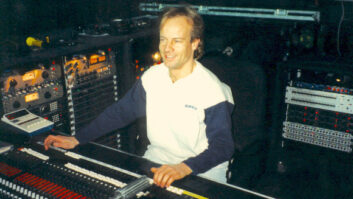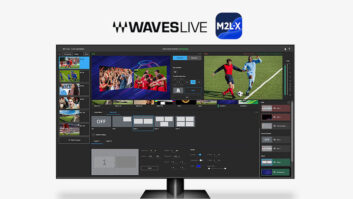It wasn’t that long ago that we started trusting digital enough to be all-in. Since then, and especially lately, the evolution of digital products has been stunning. As prices have gone down, features, capabilities and sound quality have ballooned. And while manufacturers have paid the most attention to the tools at the middle of our signal flows, the transducers at the front and back end have chugged along. Not that there hasn’t been anything new, just not at the pace of the digital links in the chain.
That said, I’ve been noticing some great new developments that are taking transducers to a new level. At the front end, the microphone, there have been some exciting new products and design tweaks that have been well accepted. Never afraid to innovate, Audio-Technica bowed the AT5040 in 2012 using four rectangular capsules, and more recently, the AT5045 took the concept to new highs. I reviewed the side-address, fixed-cardioid condenser in the November 2015 issue of Mix and it quickly became my favorite mic produced in the last 10 years. It’s a stunning performer.
Steven Slate announced his Virtual Microphone System a couple of NAMMs ago, and it’s now a reality. It’s an all in bundle, including a microphone, preamp and a plug-in that digitally simulates classic large-diaphragm transducers. The names of the plugs thinly veil their intentions—that is, to offer digital models of a U 47, 251 and C800 microphone, plus 1073 and EMI V76 preamps. Fabrice Gabriel and his team provide the digital know-how. Fabrice is a guy who hasn’t hit a foul ball in his career; everything he touches is excellent. The plug-in couldn’t be simpler. It offers a single horizontal fader that ramps the model from 0 to 150 percent, letting you add as much or as little of the modeled effect as you’d like.
More recently, Erik Papp and Chris Townsend released the Sphere L22 microphone. The L22 expands on Slate’s VMS, offering an impressive combination of physical design and plug-in models and controls. At the start, the mic has two discrete capsules, one facing front and the other the back. The cable breaks out to dual XLRs, which are recorded to two tracks in your DAW. When used with the Sphere DSP plug-in, you can model classics like a U 47, M 49, U 67, U 87 (old and new) and C12. Also, there are hybrid models including a 4038, 451, and even an SM57.
Adding to the mix is a nine-position polar pattern control, three-position highpass filter, and axis control allowing you to rotate the mic without changing the polar pattern. Think of this as being able to change your mic position up to 180 degrees, after you record—a stunning possibility. There’s also a proximity control where you can add or subtract proximity after the fact.
Sennheiser expects to ship its AMBEO 3D virtual reality microphone and plug-in by the end of this year. The mic captures high-quality audio on four axes and then uses digital tools to expand the sources to other formats, including 9.1. AMBEO 3D is mostly driven by immersive, consumer 3-D video systems from GoPro and others, but that never stopped studio audio engineers from getting onboard. The product offers venue modeling software for live performance (DJs), greater audio landscapes for gaming and digital entertainment systems like Oculus. The demo I saw at the Sennheiser booth at NAMM was excellent. It was a piano performance in an empty concert hall. I could rotate 360 and look around the venue from my “seat”, while AMBEO 3D provided believable dynamic audio.
Another new innovation comes from MXL. The DX-2 is the first mic of its type featuring separate cardioid and super-cardioid dynamic capsules in the same body. You may say, “That’s been done,” but the ability to crossfade between the two capsules at the mic is a new look at sound shaping. Nextgen would be an app where you could control this remotely!
In the live world, DPA’s d:facto handheld mic offers a range of adapters for wireless use plus a a dual personality like the DX-2. The supercardioid front lobe focuses on the source, while the back lobe, which is smaller than on a normal supercardioid, offers minimum bleed.
At the back end of the chain are some interesting speaker developments, including the Fluid Audio FPX7 active monitor reviewed this month by Mix writer Brandon Hickey. Fluid is a new company helmed by Kevin Zuccaro, who had a hand in some of the speaker designs for JBL, Cerwin-Vega and M-Audio. While an active, coaxial near-field monitor is nothing new, the inclusion of a ribbon tweeter in the design is.
Currently in review by Mix’s Steve La Cerra are the Genelec 8350 and 7360 Smart Active Monitors and Sub. Genelec has offered room calibration and networking on many models, but this is the latest incarnation. Add the Genelec Loudspeaker Manager, where you can control up to 30 monitors and subs in a room, and things get fascinating. Watch for Steve’s review in our AES issue.
It’s nice to see the bookends of our world, the devices that capture and move air, integrating digital and tweaking designs in new ways. Just as the AT5040 spawned the AT5045 years later, look to the products mentioned here to wake up the industry and push new transducer innovations. And if you’re at AES in Los Angeles at the end of the month and see me on the floor, let’s talk about it!







